Today, the Office for National Statistics (ONS) has published the latest figures on staff numbers in the Civil Service. These report the size of departments at the end of March 2014.
More up-to-date analysis of Civil Service staff numbers can be found on our blog. As of March 2014, there are 405,070 civil servants (Full time equivalent – FTE), down 73,060 since Spending Review 2010. 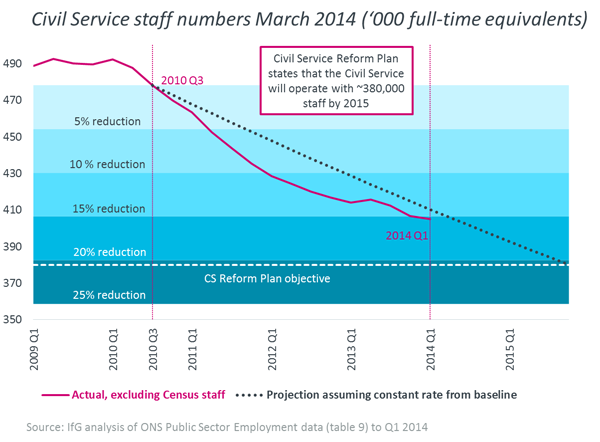
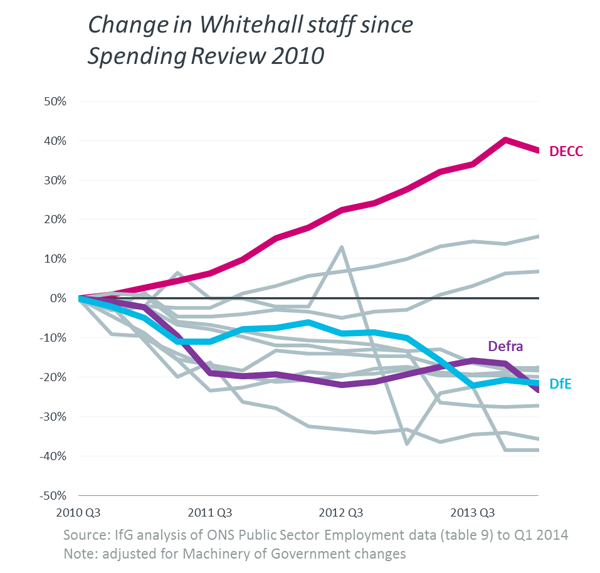
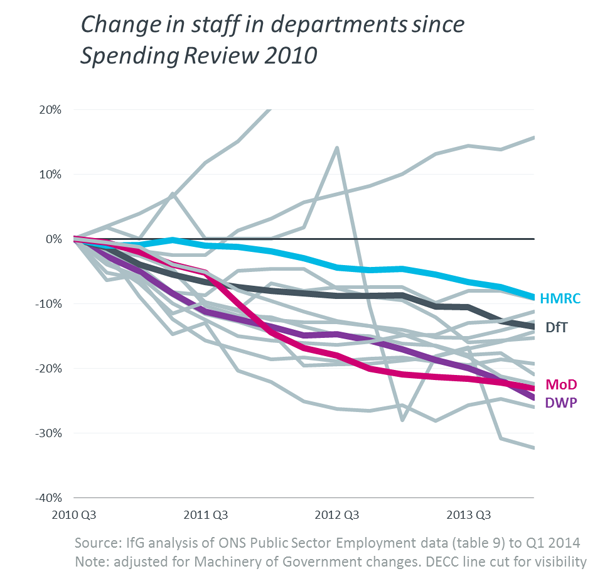
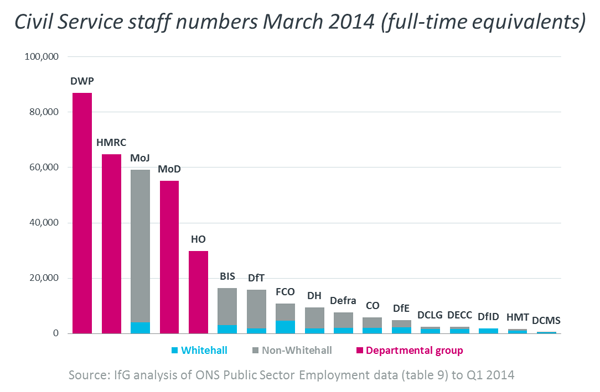
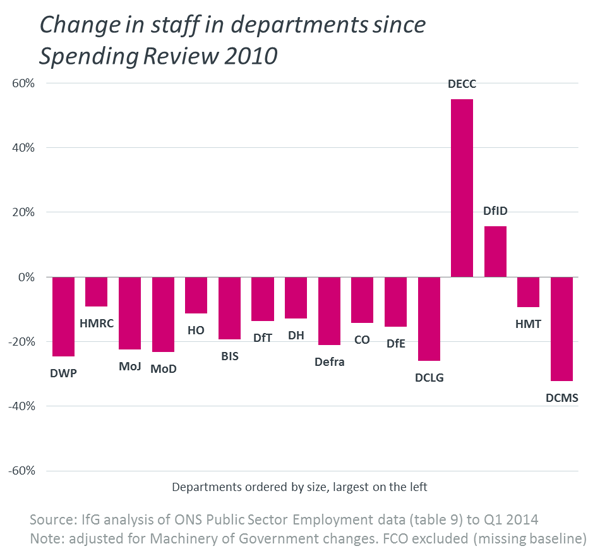
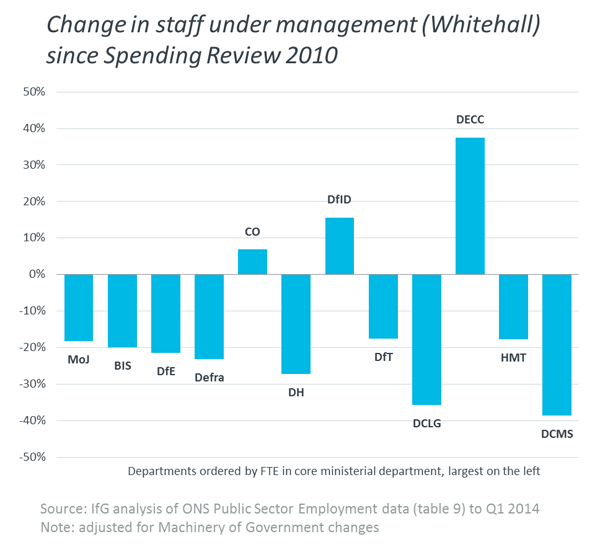
- Topic
- Civil service
- Administration
- Cameron-Clegg coalition government
- Publisher
- Institute for Government